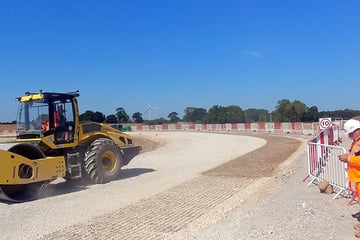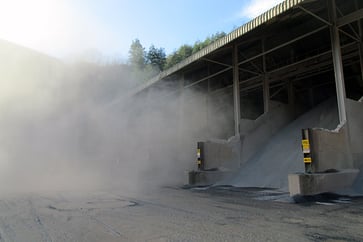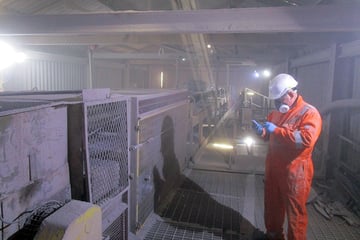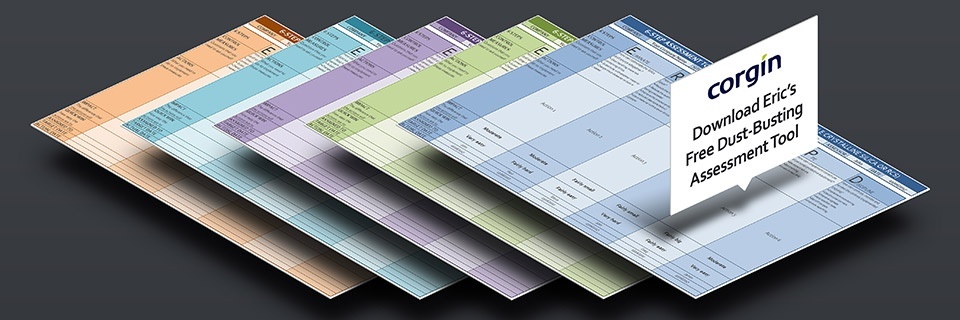What is ERICPD?
You may be thinking, who on earth is Eric?
ERICPD is an acronym used by health and safety organisations such as IOSH and NEBOSH. It is a 6 step risk assessment model to help us prioritise health and safety hazard control measures in the workplace. It stands for Eliminate, Reduce, Isolate, Control, PPE, and Discipline.
This popular acronym can help us to get a clear focus on the measures required to reduce the health risks of Respirable Crystalline Silica (RCS).
What is RCS?
Silica is a natural substance found in most rocks, sand, and clay. Silica dust or RCS is the fine, breathable dust that is generated during quarrying and processing operations involving these materials, and when cutting, grinding, or drilling finished products such as bricks, tiles, and concrete. Prolonged or intensive exposure to this ultra-fine dust can cause silicosis, lung cancer, or chronic obstructive pulmonary diseases (COPD) such as bronchitis and emphysema. All of these diseases can cause permanent disability or early death. According to an All-Party Parliamentary Group report, in the UK alone, there are:
- 600,000 silica-exposed workers
- nearly 800 deaths per year from lung cancer caused by silica exposure at work
- 4,000 deaths per year from COPD attributable to occupational exposure
- 74,000 cases of COPD preventable over 25 years through improved control of occupational silica exposure
Consequently, RCS has become an increasing focus of the HSE, and the consequences of non-compliance with Workplace Exposure Limits (WEL) have become increasingly serious.

Where Do I Start?
As part of their risk assessment process, many organisations whose personnel are frequently exposed to silica have now implemented airborne dust monitoring to ensure occupational exposure is below the Workplace Exposure Limit (WEL) of 0.1 mg/m3 respirable dust, averaged over 8 hours. Where airborne dust levels exceed this limit, ERIC PD helps us to prioritise measures to reduce the risks.
Use Eric's glasses to focus on the priorities:
Eliminate
The first and most obvious question we have to ask is whether the silica source can be eliminated altogether or substituted with another material. In many cases, the answer is ‘no’ because there are no viable alternatives. This means that we have to look at how we can...

Reduce
...reduce the source of the RCS. This could entail reducing the quantity of material we process, reducing our hours of operation, or using a material with a lower silica content in order to reduce the levels of exposure. You can compare the silica content of common materials using the table below:
|
Material |
Approximate Silica Content (%) |
|
Sandstone |
70-90% |
|
Concrete, Mortar |
25-70% |
|
Tile |
30-45% |
|
Granite |
20-45%, typically 30% |
|
Slate |
20-40% |
|
Brick |
Up to 30% |
|
Limestone |
2% |
|
Marble |
2% |
If reducing the source isn’t feasible or if the issue continues to persist when we’ve done all we can, the next step is to…
Isolate
...isolate the source of the RCS from personnel as far as possible, for example by limiting personnel access, installing a partition or enclosure, or automating processes. Often this still doesn’t sort things completely and we have to consider…
Control
...controls, such as introducing housekeeping procedures to minimise dust stirred up by vehicles or pedestrians, introducing local exhaust ventilation (LEV) systems, or implementing dust suppression measures such as atomisation or dust 'binders'. Only when all of the above measures have been exhausted should we look to...
Personal Protective Equipment
...PPE as the 'last resort' defensive measure to protect the individuals at risk. You may need to invest in specialised PPE, supported by expert advice and training. Once you've got this far, it needs...

Discipline
...discipline for the ongoing enforcement, monitoring, and review of the controls implemented. This can include the implementation of dust monitoring, improving signage, holding toolbox talks, and establishing KPI targets and reporting.
Conclusion
While ERIC PD was originally developed with health and safety in mind, the rationale behind it can help us structure our approach to many other risk mitigation requirements too.
You'll notice that as you move down the hierarchy of risk reduction measures, the focus shifts from dealing with the source of the hazard to protecting the persons or environment affected by the hazard. It may seem common sense, but it’s surprising how often we can overlook some of the simple, structured steps that can be taken to reduce risk in many different situations.





Share This Post
LinkedIn Facebook Twitter Google Plus Email